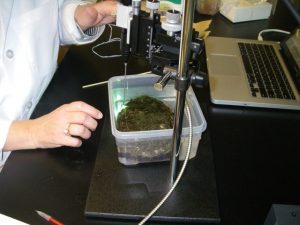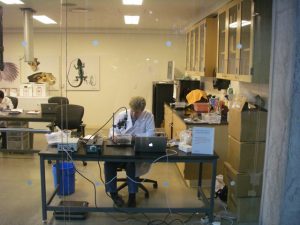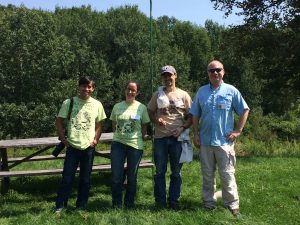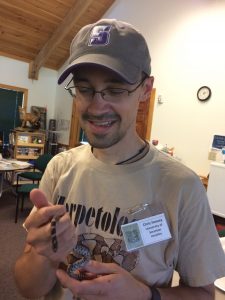This past summer, the Biology Department gained a new member – A Snake!
To be exact, the snake is a Timber Rattlesnake, and it is the center of Dr. Chris Howey’s research here in the Biology Department. Much of Dr. Howey’s research focuses on understanding the ecology of reptiles, how changes in the environment affect these reptiles, and how we can conserve and manage these reptilian populations. Maintaining healthy populations of Timber Rattlesnakes within our woods actually provides many benefits for other members of those ecosystems, as well as humans that come to visit those ecosystems! However, many folks are scared of snakes. Dr. Howey believes that much of this frightfulness stems from a lack of knowledge about snakes. The more we know about Timber Rattlesnakes, perhaps we will be less scared of these animals. Therefore, in addition to conducting research on rattlesnakes, Dr. Howey also conducts outreach with rattlesnakes – teaching people more about these animals, more about their ecology, behaviors, their history, how our Nations History intertwines with this animal, and how we can safely interact with these animals on the landscape.
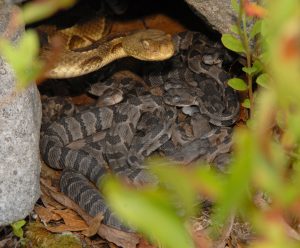
The Timber Rattlesnake’s scientific name is Crotalus horridus and it is one of 3 venomous snakes found within Pennsylvania. The other venomous snakes are Copperheads and Pygmy Rattlesnakes. The venom produced by a rattlesnake is primarily used as a digestive enzyme – the more the food item is broken down into smaller pieces, the easier it is to absorb those nutrients. The diet of the Timber Rattlesnake typically consists of mice, voles, shrews, and chipmunks. Larger rattlesnakes may eat slightly larger prey like rabbits and squirrels, but that would be a very big rattlesnake. The Timber Rattlesnake typically exhibit one of two color patterns – a Black Morph or a Yellow Morph. A Timber Rattlesnake cannot change this trait throughout it’s lifetime – a yellow morph will always be a yellow morph.
The Timber Rattlesnake that now resides outside of Dr. Howey’s office (LSC 251) is a female, yellow morph Timber Rattlesnake. Some time in the past 5-8 years, she was illegally captured from the wild by someone who was trying to collect many different reptile species for their own personal collection. When this collection became known to the Pennsylvania Fish and Boat Commission, the illegally captured reptiles were confiscated. Unfortunately, because we do not know where this individual came from, we cannot release her back into the wild (she would not know how to locate a den to overwinter within and she may not know where to find food within her environment). Therefore, she will live out her life as a steward of her species; helping to educate the public on Timber Rattlesnakes. Hopefully, with the aid of this beautiful animal, we can help change the negative outlook that many people have regarding Timber Rattlesnakes.
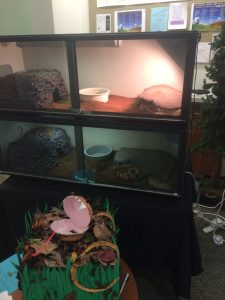
The Timber Rattlesnake is in the top cage with the light on. She is currently sitting under the rock. The Ballot Box is shown below the cage, and ballots must be inserted into the mouth of the snake!!!!
So now that she has taken up residence among the halls of the Loyola Science Center, it is only fitting to provide her with a name! Of course, she will always have the name bestowed on her by Carl Linnaeus in 1758 as Crotalus horridus, but we can provide her with a more updated name as well. So, we need your help in thinking up the perfect name for this beautiful animal! Swing by Loyola Science Center and introduce yourself to the rattlesnake. Then, when you have a good name, write it on a ballot slip and place it in the Deposit Box sitting next to her cage. Everyone is always welcome to come and visit the snake whenever you wish. And similar to zoos and aquariums, please don’t knock on the glass or try to scare the snake, because that is just rude. We want to make sure our new friend is comfortable and at ease the entire time she lives here.
On November 21st, we will stop accepting ballots. Then, over Thanksgiving Break, we will pick a name from among the ballots. If your entry gets chosen, then you will win a $25 Gift Card to Starbucks and you will get a picture with the snake! Of course for safety reasons she will remain in her cage 😉

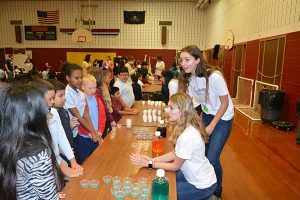
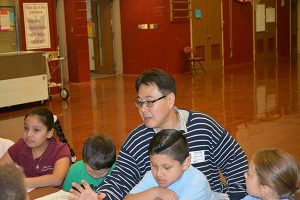
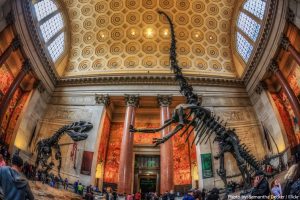
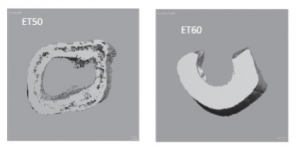
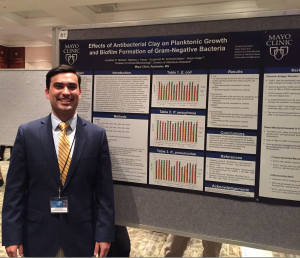
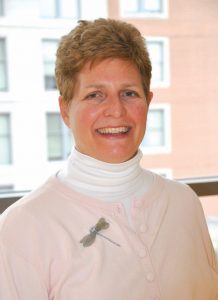 Our first Faculty Spotlight shines bright on Dr. Janice Voltzow. The first woman to be appointed as a full professor within the Biology Department at the University of Scranton and the first woman to be appointed as Chair of the Department, Dr. Voltzow has been breaking down barriers as she mentors young biologists, enriches the minds of students in the classroom, and continues to conduct research on exciting evolutionary-based concepts.
Our first Faculty Spotlight shines bright on Dr. Janice Voltzow. The first woman to be appointed as a full professor within the Biology Department at the University of Scranton and the first woman to be appointed as Chair of the Department, Dr. Voltzow has been breaking down barriers as she mentors young biologists, enriches the minds of students in the classroom, and continues to conduct research on exciting evolutionary-based concepts.